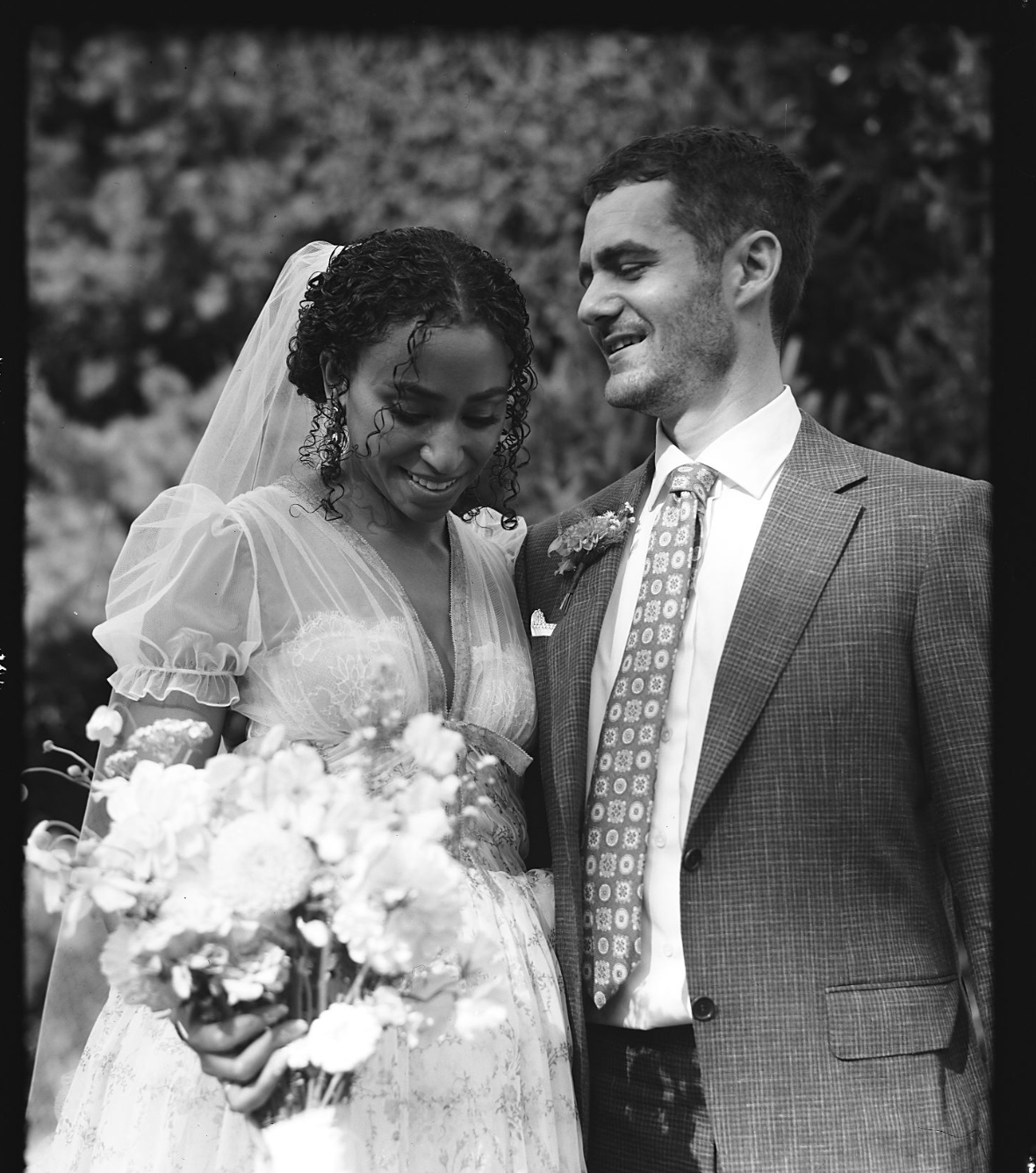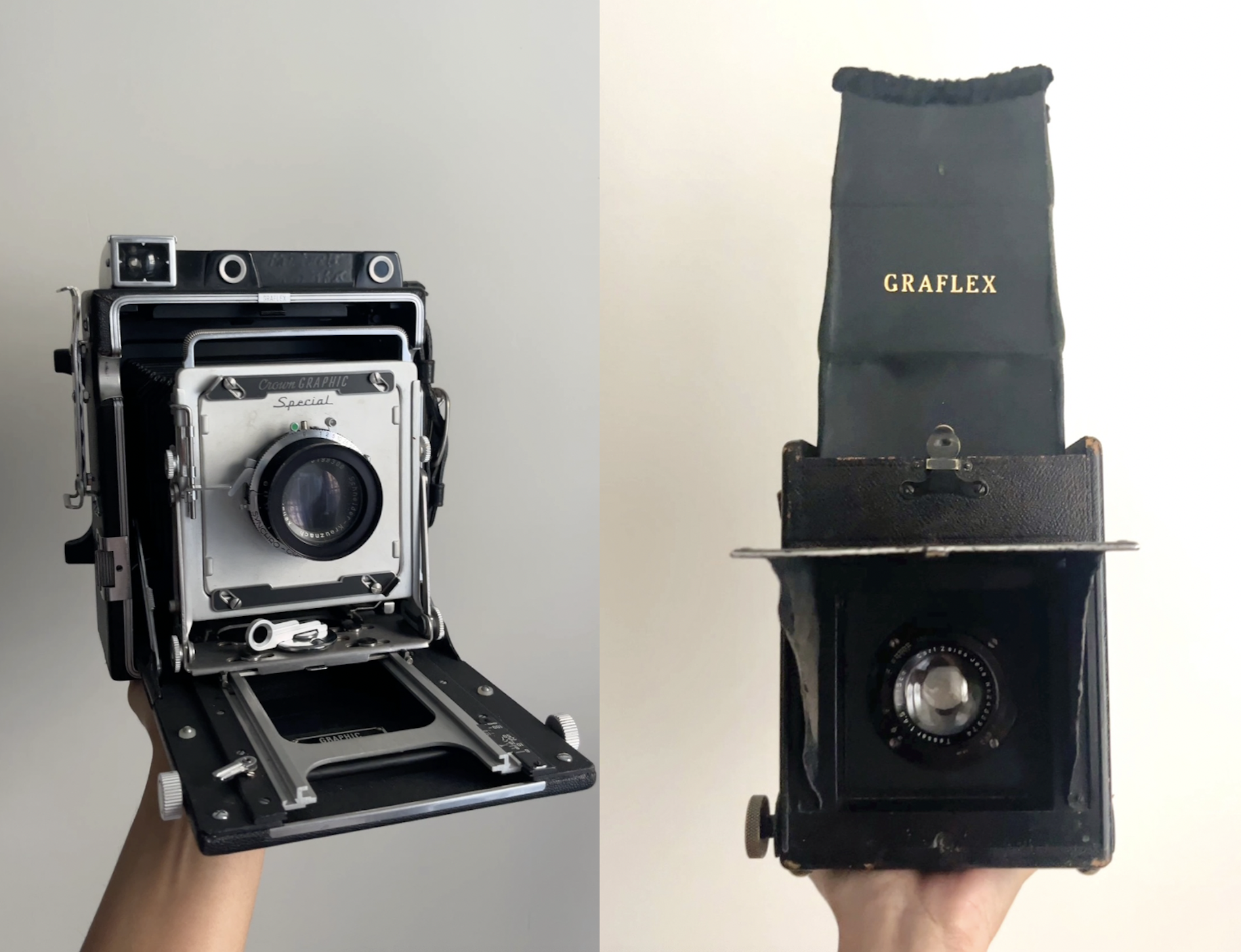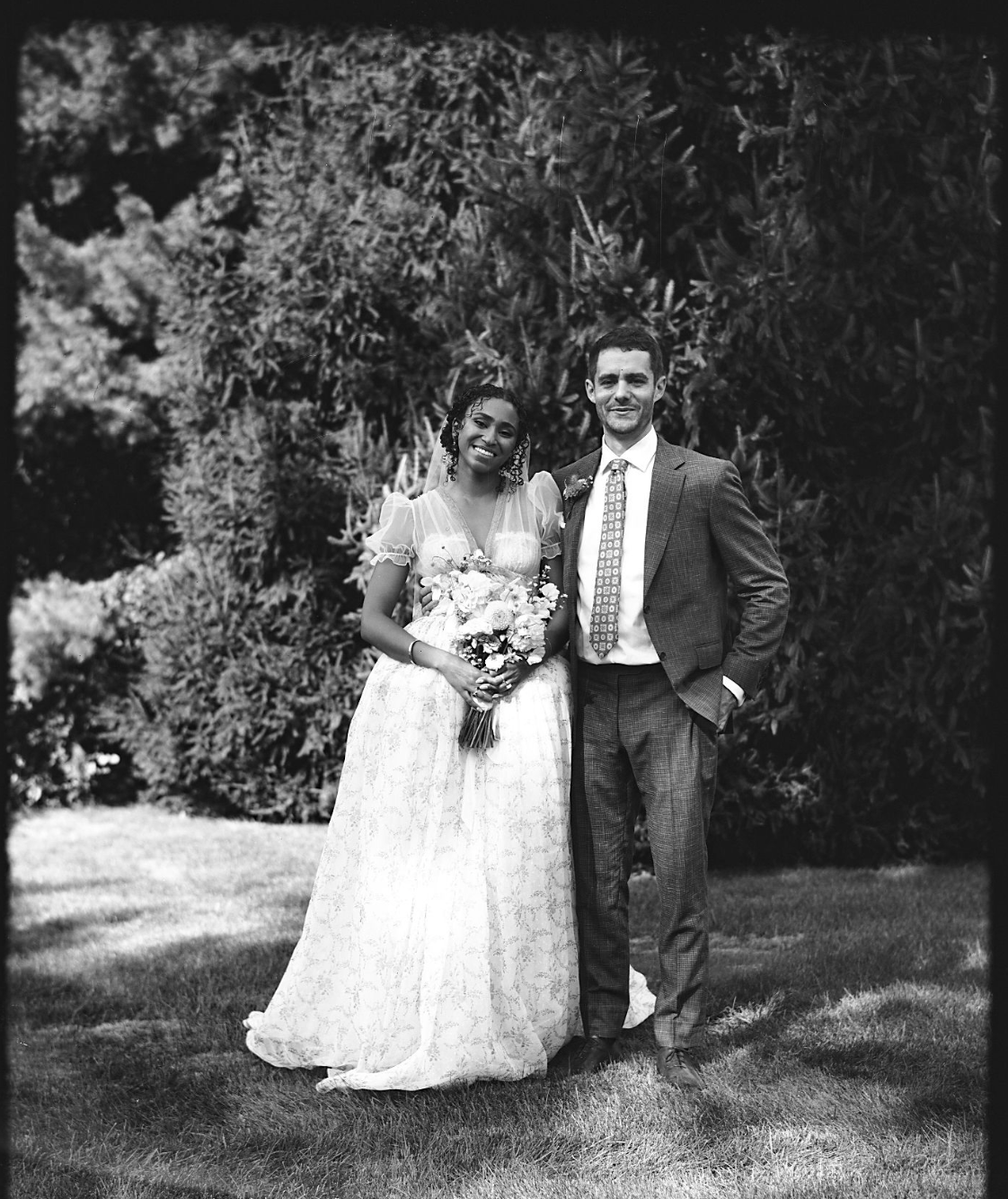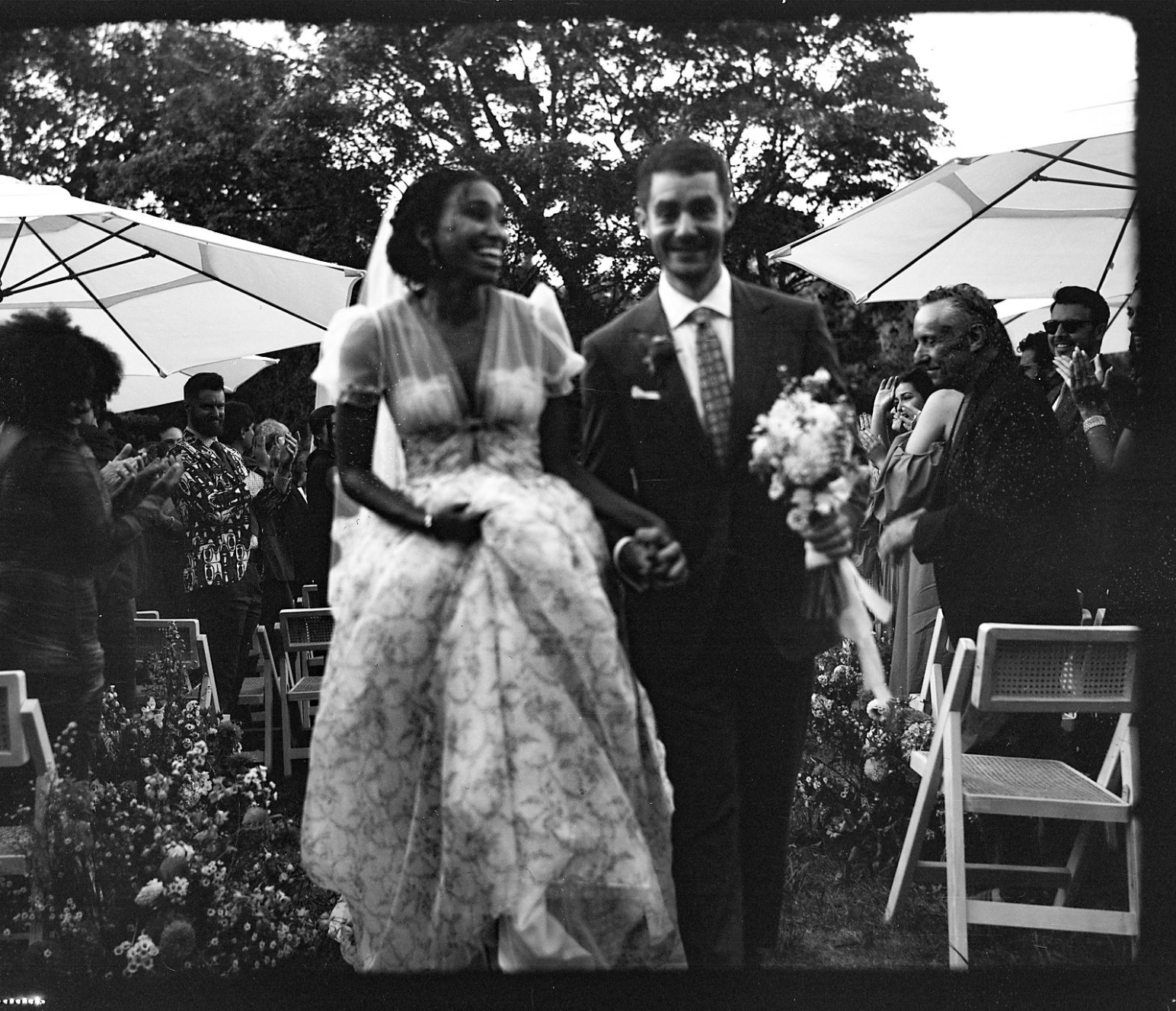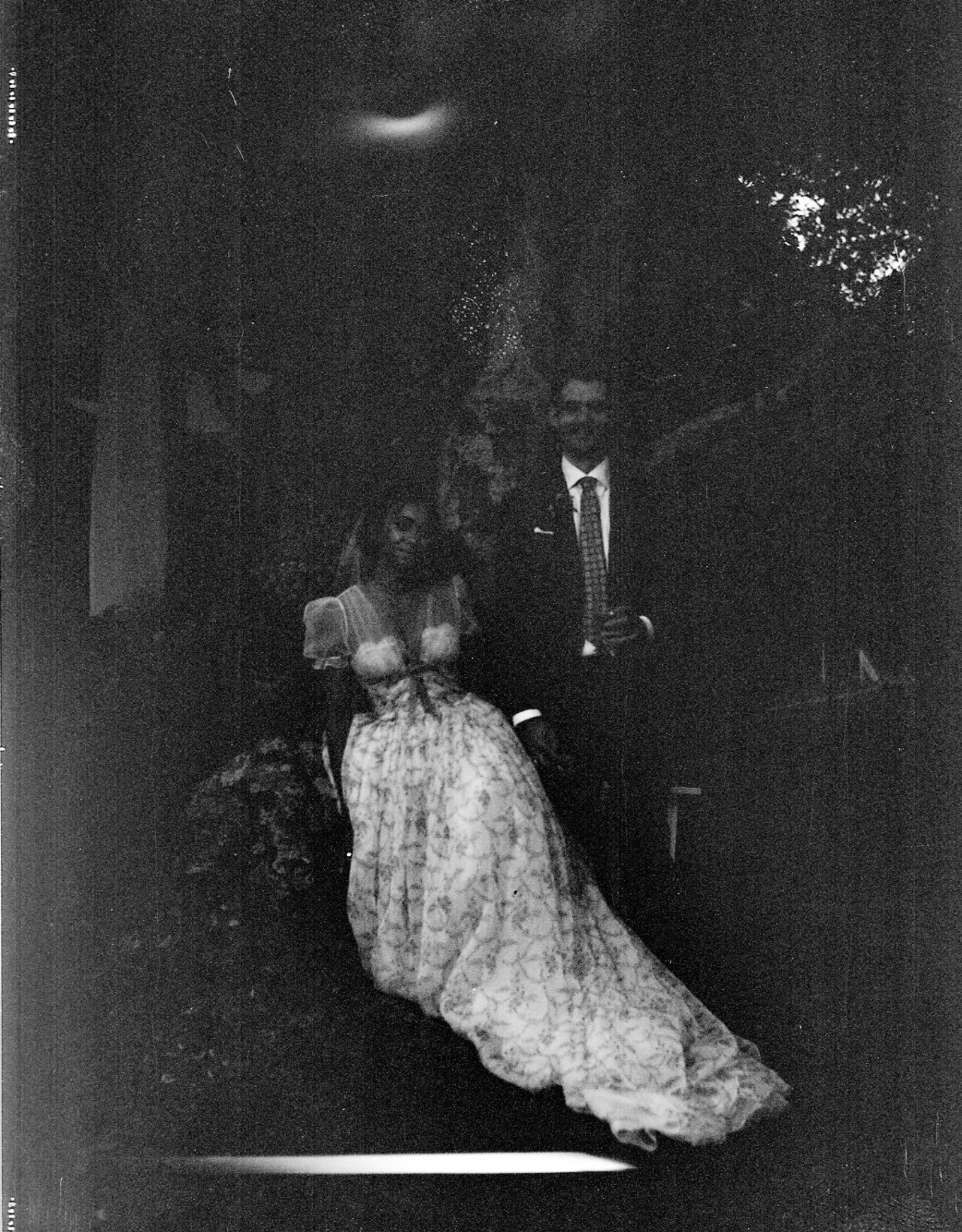Intro To Large Format Film
In a world that revolves so heavily around advanced technology, instant gratification and digital precision, the deliberate slowness of shooting 4x5 sheet film feels like a quiet rebellion — and a beautiful one at that. As someone who grew up learning about film and who has an affinity for history, I’ve always been drawn to large format photography. There is something so reverent about it. Something enduring. And when you bring that into the emotionally charged, fleeting atmosphere of a wedding day, it creates a kind of magic that no other format quite captures in my opinion.
Noel and Jake on 4×5 during their wedding day, 2024. By Mina Sisley
A Brief History:
4x5 sheet film, a staple of large format photography, has been around since the 19th century. It became prominent during the golden era of photography — used by legends like Ansel Adams, Dorothea Lange, and Margaret Bourke-White.
Unlike 35mm or even medium format, 4x5 sheet film captures an astonishing amount of information — Think of it like megapixels in a digital camera. Newer digital cameras produce significantly larger file sizes because they collect more pixels per inch in each frame, allowing for an increased amount of visible detail compared to the first digital cameras. Large format is to 35mm film what a new professional mirrorless camera is to a 2006 point and shoot digital camera.
The specific LF cameras I prefer are the Graflex series D and the Crown Graphic (pictured below). They are roughly circa1912-1923 and are still in perfect working order today, over 100 years later.
Crown graphic (left), Graflex series D (right) - both active cameras I use today
So why 4x5 for weddings?
Incorporating 4x5 film into a wedding day isn’t just a stylistic choice — it's a mindset. It invites everyone to slow down. It’s about presence and a unique experience. With film being a bit of a dying breed these days, not many people are shooting this format professionally and in turn not many people today are getting to experience this incredible and intentional process of having their portrait made.
Weddings are a big deal, which is why I believe they deserve to be photographed in a way that is also a big deal. In a way that is genuinely special and has already shown us that it can withstand the test of time.
There's a ritual to it: loading the film, composing under a dark cloth, checking focus on the ground glass. It’s intimate. Quiet. and incredibly tactile. You have to be sure that THIS is the image before you release the shutter because you have literally one shot. The gravity of the moment is felt so deeply through this process both as the photographer and the subject. A feeling that is very obviously archival in a way that digital doesn’t quite convey.
From a visual standpoint, the results are often unexplainably beautiful. The shallow depth of field, the creamy smooth bokeh, and the almost sculptural quality of light. When scanned or printed, the images take on a richness that feels both archival and editorial. Perfectly suited for people who want their wedding images to be physical heirlooms.
Even in its imperfections it feels more like a piece of art worthy of framing than just one of 100 similar images.
Each shot is a single, intentional frame. The digital “spray and pray” is not an option with a format like this which makes each moment that much more special. There are really no second chances. and thats what I like so much about it. There is no “do that again!”, Its just raw and simple.
There's something subversive about choosing film in 2025. Especially large format film. It’s not about chasing trends, but honoring what’s timeless. And in a world that often feels too fast, 4x5 photography is a beautiful reminder that the most meaningful moments are the ones we slow down for.


